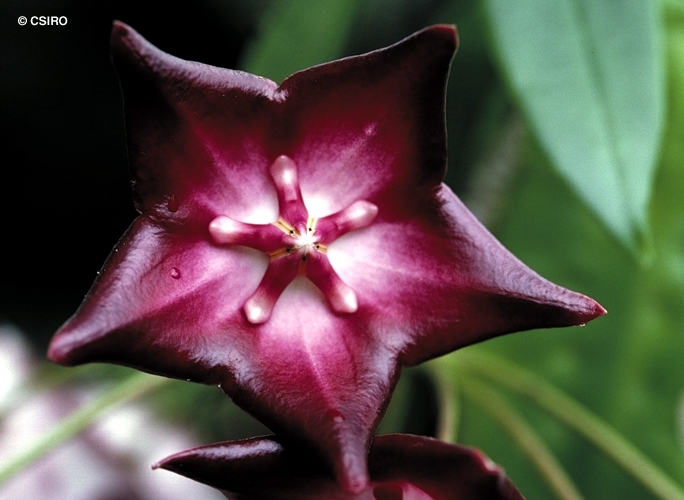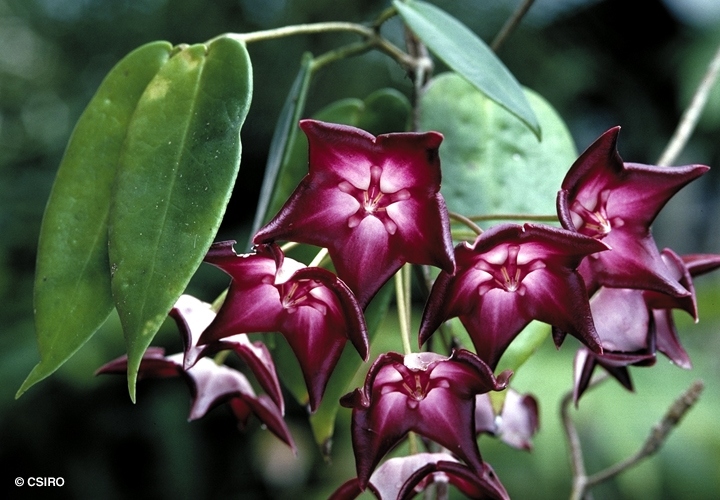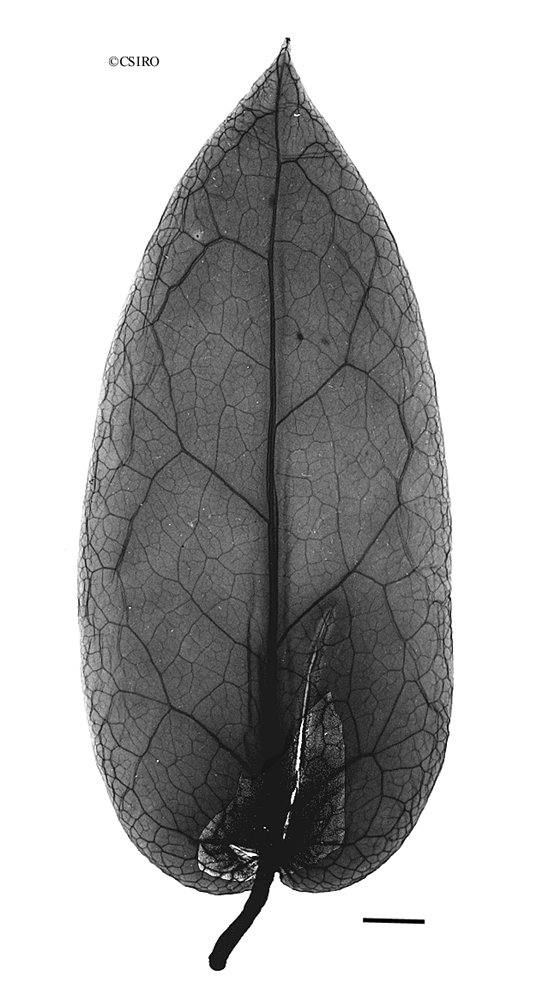Australian Tropical Rainforest Plants - Online edition
Hoya macgillivrayi F.M.Bailey
Bailey, F.M. (1914) Queensland Agricultural Journal Series 2 1: 190. Type: Queensland, Claudie River, Lloyd Bay, W. Macgillivray; holo: BRI.
A slender vine not exceeding a stem diameter of 2 cm.
Inflorescence an umbelliform raceme. Flowers borne in compressed racemes resembling umbels. Peduncles about 1-7 cm long, pedicels about 7-8 cm long. Flowers about 5.5-7 cm diam. Calyx lobes fleshy, about 3-5.5 mm long. Corolla fused for about 23-25 mm, corolla lobes about 22 mm long. Staminal corona star-shaped. Anthers about 2.5 mm long, sessile, each anther ending in a terminal appendage. Corona about 20 mm diam., shaped like a starfish (Asteroidea). Pollen aggregated in pollinia. Ovaries 2, each about 4 mm long. Ovules numerous.
Fruits about 21.5 x 1.6 cm. Seed + plume about 45 mm long. Seeds about 6.5-7 mm long. Embryo about 4.5-5 mm long, cotyledons wider and longer than the radicle.
Features not available.
Endemic to CYP. Altitudinal range from near sea level to 450 m. Grows as an epiphytic vine in monsoon forest and rain forest.
This species has horticultural potential producing umbels of large strikingly-coloured flowers.








